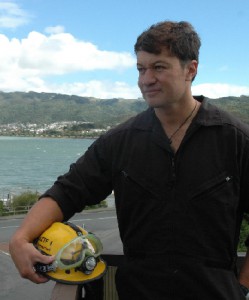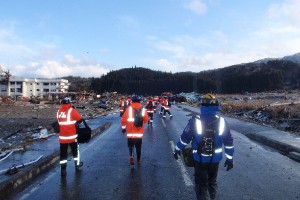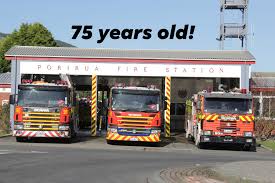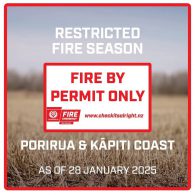Porirua firefighter Turi Hodges returned from northern Japan last week with photographs conveying the carnage of the earthquake and tsunami – but the words have been harder to come by.
“It was on a biblical scale. It’s hard to explain the magnitude of it to family,” he says.
Mr Hodges was part of the 43-man New Zealand Urban Search and Rescue unit (Usar) deployed to the Miyagi Prefecture, about 120km north of the stricken Fukushima nuclear power plant. This came immediately on the heels of three weeks’ rescue and recovery work in Christchurch, including the ravaged CTV building.
The unit spent much of its time in Minami Sanriku, a coastal township of about 17,000, which Mr Hodges compares in size to Masterton. He says the coastal terrain was mountainous, with villages in the valleys.
After the tsunami, these valleys acted like funnels, increasing the power of the water surge.
“The destruction was complete. The only building left standing was a three-storey school. There was nothing inside but fish.”
Unlike Christchurch, where Hodges and his Usar team arrived soon after the quake and worked non-stop for 36 straight-hours, desperate to locate survivors, there was never any doubt the mission in Japan was one of recovery.
Half of Minami Sanriku’s 17,666 population remain missing. Of those who weren’t, Mr Hodges saw very few villagers, reasoning there was nothing for them to come back for, “nothing but bits of clothing and shoes”.
Coming directly from Christchurch and its warm weather, Hodges says the team were not well equipped for the snow and -17C temperatures at night. All searching was done by hand as there was no power source for their tools. Water was rationed and, at one stage, three days worth of food had to last five – not easy when undertaking such physical, energy burning work.
“There was a lot of trading of condensed milk and cabin bread [crackers] – they were highly valued items,” he says.
Making the mission harder, co-ordination with the local authorities was minimal, the unit sometimes searching areas they would later learn had already been searched by other teams.
The Kiwi unit received updates every four hours on the threat of nuclear contamination from Fukushima, and each kept a radiation suit in their bag.
“A couple of times it looked like we’d move out … One mate was in a Blackhawk helicopter that got caught in a radiation cloud and he had to be decontaminated.”
Despite the desolate scene and challenging conditions, he recognises his family back in Titahi Bay, wife Pania and four children, aged 7 to 17, as the ones baring the bulk of the worry.
“It’s been a long month, pretty hard on the wife and family. Christchurch was bad enough. Japan was at the point of being unbearable for the kids … young ones crying in the middle of the night.
” The guys back home [other firefighters] have been great helping out, coming over to cut firewood, calling to check in on my wife.”
Mr Hodges joined Usar in 2006. Until the two Christchurch earthquakes and the Japan disaster, he would normally be deployed for a Usar operation once a year.
Has the devastating double-punch of Christchurch and Japan made him re-think his commitment to the cause?
“It’s reaffirmed it. I love being a firefighter, I love what we stand for … really good guys to work with. I’ve come out of this just wanting to be a better technician, a better firefighter.”
– Kapi-Mana News – BY MATTHEW DALLAS





 CHECK ITS ALRIGHT
CHECK ITS ALRIGHT